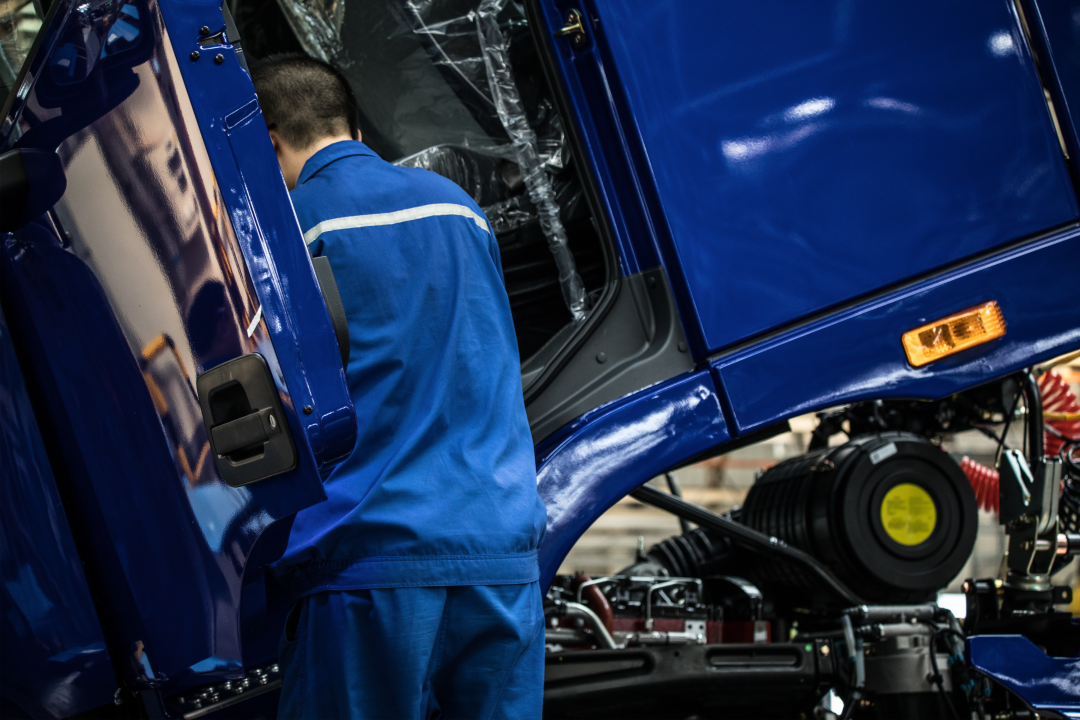
Susie Jones
Шофьори на камиони с увреждания - каква подкрепа има?
Създаден: 12.08.2024
•
Актуализирано: 12.08.2024
В Обединеното кралство 23% от населението в трудоспособна възраст съобщава, че е инвалид - без да знаят мнозина, голяма част от тях са шофьори на камиони, които пътуват безкрайно из Европа, за да доставят вашите стоки. Въпреки че са изправени пред много предизвикателства, тяхното присъствие в общността на шофьорите на камиони подчертава значението на приобщаването и разнообразието в отрасъла.
Ако имам увреждане, мога ли да управлявам камион?
Ако имате физическо или когнитивно увреждане, можете да управлявате тежкотоварен автомобил. Въпреки това трябва да преминете медицински преглед, за да се определи дали сте достатъчно здрав. Медицинският преглед се състои от следното:
Разговор с лекар относно вашето здраве: Шофьорите трябва да бъдат честни и открити.
Физически преглед, при който Вашият лекар ще провери:
Кръвно налягане
Сърце
Визия
Тест за диабет
Неврологични състояния
Разстройства на съня.
След като завършите, DVLA ще реши дали можете да шофирате.
Корекции на камиона
За шофьори с физически увреждания са налични следните модификации:
Ръчно управление на мястото на педалите
Помощни средства за управление
Ускорители за левия крак
Преобразуване на съединителя
Предпазни колани
Специализирани седалки
Оборудване за прибиране на инвалидни колички.
През 2021 г. производителят на тежкотоварни автомобили MAN адаптира четири камиона за водачи с увреждания. Адаптацията включваше оборудването на камионите с повдигаща платформа, за да могат ползвателите на инвалидни колички да имат лесен достъп до кабината - с всички органи за управление, монтирани на или около волана.
Въпреки че технологиите и адаптациите в бранша напредват, много шофьори с увреждания все още се сблъскват с предизвикателства на работното място.

С какви пречки се сблъскват шофьорите на камиони с увреждания?
Шофьорите с увреждания могат да се сблъскат с трудностите в бранша, дори ако имат необходимата квалификация и са преминали успешно медицинските прегледи. Много компании не са склонни да предоставят адаптиран автомобил, тъй като това може да бъде скъпа инвестиция.
Анди, главен изпълнителен директор на благотворителната организация Globe Truckers UK, заявява, че за шофьорите, които са готови да платят за необходимите адаптации, все още е трудно да си намерят работа.
"Някои транспортни компании не желаят да наемат хора с увреждания - те често се опасяват от препятствията, с които се сблъскват шофьорите извън кабината, например стълби и повдигане."
Дейвид Чеймбърс, шофьор на тежкотоварен автомобил с увреждания, се обяви срещу изпитанията, с които се сблъсква ежедневно, и призова за разумни корекции в Закона за равенството - особено след като правителството призова повече хора, получаващи обезщетения за инвалидност, да се върнат на работа.
Дейвид и много други хора срещат трудности в големите депа, където съгласно Закона за равенството депото не е задължено да прави разумни промени за шофьори с увреждания. От съображения за безопасност те трябва да чакат далеч от камионите си, докато разтоварват, което води до ходене на дълги разстояния и изкачване на стълби.
Каква подкрепа има за шофьорите на камиони с увреждания?
Намирането на подкрепа може да бъде трудно за хората с наранявания или заболявания, които променят живота им. Британската благотворителна организация Globe Truckers е създадена от шофьори, за да помага на шофьори - тя осигурява подкрепа за ранени, болни или инвалиди.
"Много шофьори с увреждания или пострадали не знаят към кого да се обърнат, тъй като информацията за тях е много малко. Именно тук се намесваме ние и предлагаме нашата подкрепа и насоки - независимо дали става дума за насочване към правилните хора или за осигуряване на финансиране за оборудване."
"Някои шофьори просто имат нужда от някой, с когото да поговорят, и ние сме тук, за да им предложим тази подкрепа по всякакъв възможен начин. В бъдеще бихме искали да можем да финансираме адаптирането на камиони за шофьори. Адаптациите могат да бъдат много скъпи и повечето шофьори с увреждания трябва да платят за тях от собствения си джоб. За да постигнем това, се нуждаем от повече финансиране и подкрепа от страна на хората в бранша", заявява Анди.
Как индустрията може да помогне?
За да се постигне по-приобщаващ и разнообразен пейзаж, индустрията трябва да направи повече, за да се приспособи към физическите и когнитивните увреждания - промяна, която трябва да се случи скоро, казва Анди.
"Жизнено важно е индустрията да върне подкрепата и времето си обратно в себе си, независимо дали директно към шофьорите с увреждания или към благотворителни организации като Globe Truckers. Индустрията не може да очаква да се хареса на хората, ако не осигурява подкрепа за малцинствата."
Като убежище за много шофьори, спирките за камиони могат да проправят път, като предоставят достъпни съоръжения. През 2022 г. правителството инвестира 100 млн. паунда в сектора, за да подобри крайпътните съоръжения и да създаде по-безопасни паркинги за камиони.

Финансирането от правителството може да подобри достъпа на водачи с увреждания до популярни спирки. Промени като следните биха могли да окажат значително въздействие:
Паркоместа за инвалидни колички: шофьорите, които трудно влизат и излизат от кабината, се нуждаят от допълнително пространство - особено за тези, които се нуждаят от подемник.
Достъпни удобства: достъпни ресторанти, тоалетни и други съоръжения осигуряват приобщаваща среда.
Фирмите от автопарка могат да помогнат за създаването на по-приобщаваща среда, като приложат следните мерки:
Модифициране на камиони - осигуряване на лесно управление за шофьори с увреждания чрез ръчно управление и адаптивни технологии.
Подкрепа и обучение - осигуряване на курсове за справяне с конкретни предизвикателства или нужди.
Приобщаващи практики за наемане на служители - прилагането на непредубеден подход при наемане на служители насърчава приобщаваща и разнообразна култура.
Осигуряването на разнообразна и приобщаваща култура е жизненоважно за привличането на повече шофьори в сектора на товарните превози. Подкрепата за хората с физически и когнитивни увреждания е пренебрегвана от индустрията, което кара много шофьори да не знаят към кого да се обърнат. Шофьорите с увреждания предлагат уникална гледна точка и адаптивност, които са добре дошли за индустрията.
Какво да правите, ако станете инвалид по време на кариерата си?
Ако развиете "подлежащо на уведомяване" медицинско състояние или увреждане, трябва да уведомите DVLA - DVLA ще направи следното:
Вземете решение с писмо - при някои обстоятелства може да е необходима повече информация.
Оценете здравословното си състояние и вземете решение за резултата.
Ако трябва да адаптирате автомобила си, ще ви е необходима независима оценка на вашите [адаптации] (https://www.drivingmobility.org.uk/).
Ако трябва да спрете да шофирате, DVLA ще ви даде медицинска обосновка за това.



